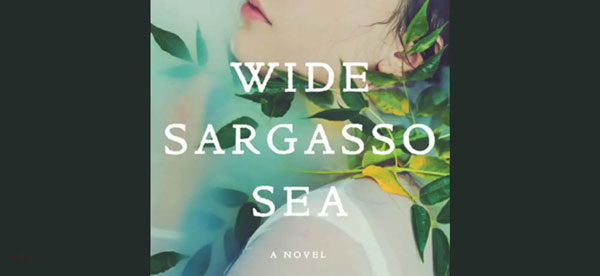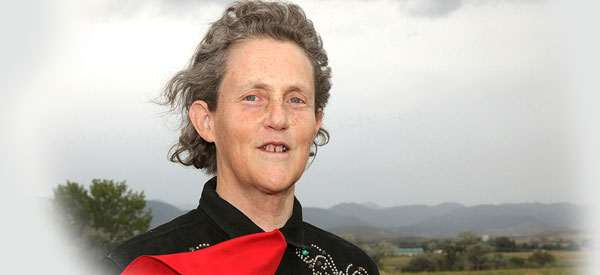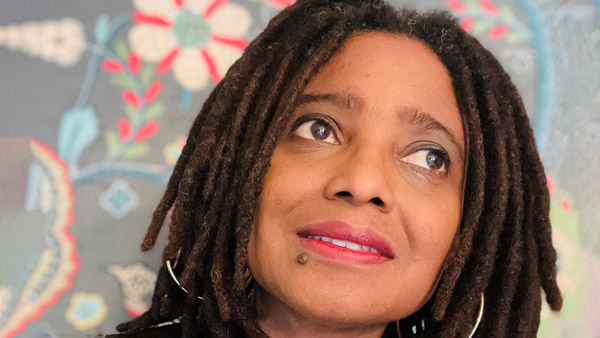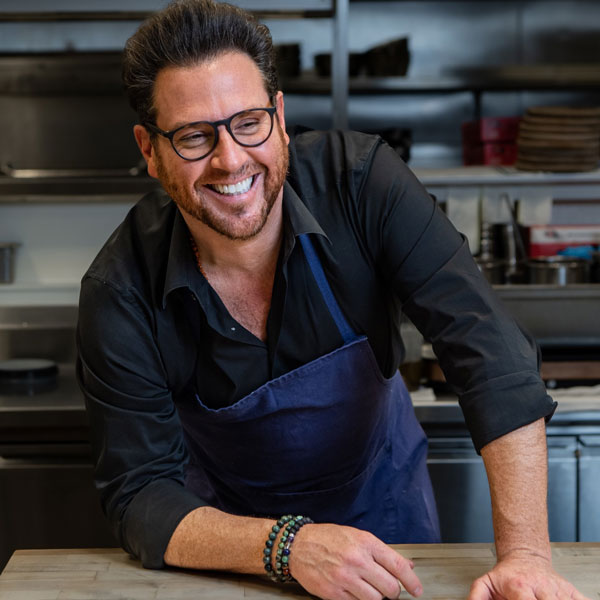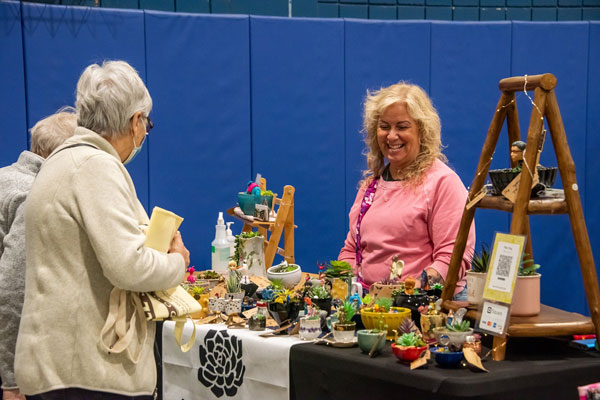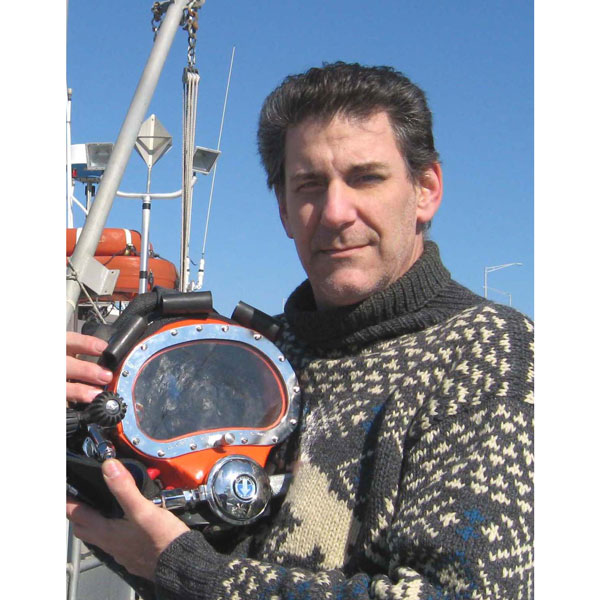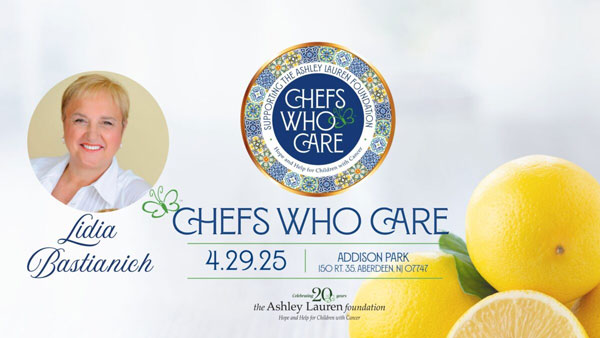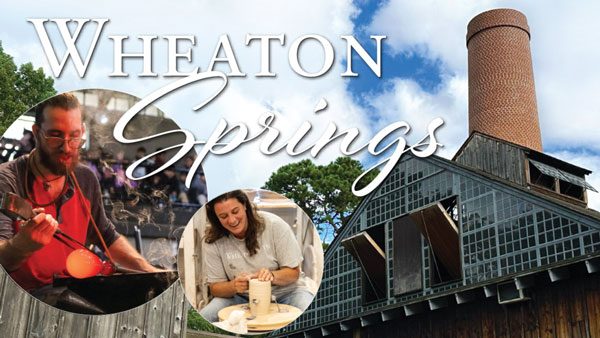By Shen Shellenberger, JerseyArts.com
originally published: 06/22/2022
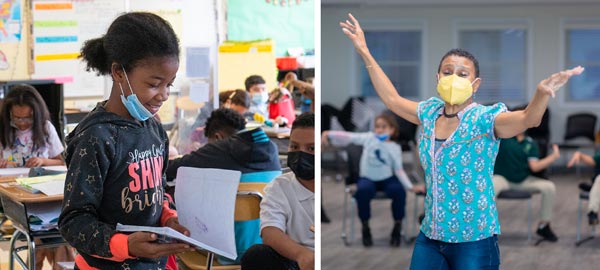
Storytelling is one of those words that is not just a descriptive term. It is evocative. It is personal. It is inclusive. It is communal. And it is what Storytelling Arts, Inc. is all about.
Maybe you remember your aunt, the one who always wore a big purple hat, recounting the days when she and your father were young. Or you flash back to a night when you and your friends tried to outdo each other with terrible tales of ghosts and one-legged men. Or you think about your mother creating spur-of-the-moment, silly stories as you two walked to school. And while these experiences may come from various sources, the root is the same.
“Storytelling is in our DNA,” said Executive Director Linda Helm Krapf. “It started with drawing in the sand and evolved into language,” she said. “It was what the early humans had.”
“Then it took thousands of years to build in the expectation that we would learn something new by listening to people’s stories,” she said.
Storytelling Arts is a non-profit community of storytellers, story writers, and teaching artists who work to protect, promote, and impart the living art of storytelling, and to be a resource for teachers and others who work with young people.
Community is central to the organization’s mission, whether it is through partnerships with other groups, through professional development, like the 4-day Transformative Storytelling program in Lambertville June 27-30, or events like Cranky Storytelling at the Birdhouse Center for the Arts in Lambertville on June 28.
And while teacher training is a focus, Krapf notes that the organization runs programs throughout the year on topics like Storytelling in Business, Storytelling in Marketing, Story Development and Writing, and Storytelling Performance Training.
Storytelling Arts is marking its 25th year with an anniversary celebration on June 16 that will include wine, dinner, and – of course – storytelling. The event will also recognize four people – Dr. Susan Cardillo, Edna Friman, Karen Lavallen, and Ellen Musikant - who “showed up and stood up for Storytelling Arts during important transitions in the organization's history,” Krapf said. “They are truly guardians of our special mission.”
As did the world at large, Storytelling Arts felt the seismic impact of the pandemic.
“Looking at everything,” Krapf said, “challenges you and gives you reason to pause.”
“One thing we learned is that crises, which are inevitable, require relevance, responsiveness, and resilience,” Krapf said “The last two-and-a-half years informed how we should go forward into the world. We began to look at how to be in service in these times.”
With schools closed, the organization pivoted and learned how to reach students and others virtually. When schools reopened to only essential personnel, they responded by working with students after-hours and during the summer. And they also took inventory.
“Children need to have a learning environment that feels authentic to them,” she said. “They need to be able to see themselves through education and storytelling.”
“We also asked ourselves how Storytelling Arts could apply its mission to the work of equality, how could we bring diverse stories to integrated audiences to build empathy and heal divisions,” Krapf said. “Society is more fractured now, and storytelling can be a way to gather people together.”
“The Untold Stories of Storied People Project, run by Cynthia Renta, director of community projects, is designed to do just that,” she said, “to put storytelling in service to the cause of equality and justice.”
The program is in Phase I, developing partnerships in four New Jersey locations – Jersey City, New Brunswick, Morris County, and Trenton – to identify community participants with stories to tell. Participants go through training to teach them how to sculpt their stories and strengthen their skills, then they return to serve their communities.
When I talked to Renta, a multi-disciplinary performance artist, folk dancer, and cultural producer from Jersey City, I asked her this elementary question, “what is storytelling?”
“The traditional idea is that storytelling is verbal,” she said. “But I have been telling stories through my body for years.”
She picked up the love of dance through her mother. “And when I lived with my sister,” she said, “I’d go to dance class at the Nuyorican (Puerto Rican New Yorkers) Poets Café.”
That experience led Renta to explore. “I was trying to push a square peg into a round hole,” she said. “My outlet became these community arts places.”
“Artists from folk communities often use movement to reimagine the future by drawing on traditional practices,” she said. “When I realized I wanted to say more than I could with words, I got kind of experimental.”
“I started my journeys rooted in Indigenous practices,” she said. “Now I use my everyday life as inspiration and go with things that resonate with me.
“Through the Untold Stories project, we are trying to find a language around ritual performance art that is universal.
“As people grow older, they can become rigid and fixed in a long-standing belief about who they are and about their identity and sense of self.
“That is why it is so important to allow children freedom of choice early in their lives.
“My goal is to link art and restorative practices to help heal communities.
“I believe everybody is a storyteller,” said Renta. “It’s in all of us.”
Krapf agrees.
“We know in our hearts that all creatives are storytellers and love to collaborate,” said Krapf.
“Our oral tradition is more than Storytime at the library,” she said. “We need to replace that image with one of people around a campfire.”
“That is our future.”
About the author: Jersey Girl, music lover, and culture geek – Shen Shellenberger has made a career of her life-long love of the arts. From her jobs at WXPN-FM and the Philadelphia Museum of Art, to her 25 years as a freelance writer, she instills her Jersey-born roots in all she does. Whether it’s the beauty of a classic painting, the dynamics of contemporary dance, or the raw energy of rock ‘n’ roll, Shen brings her perspective to whatever she covers.
Content provided by
Discover Jersey Arts, a project of the ArtPride New Jersey Foundation and New Jersey State Council on the Arts.
FEATURED EVENTS
To narrow results by date range, categories,
or region of New Jersey
click here for our advanced search.
EVENT PREVIEWS



